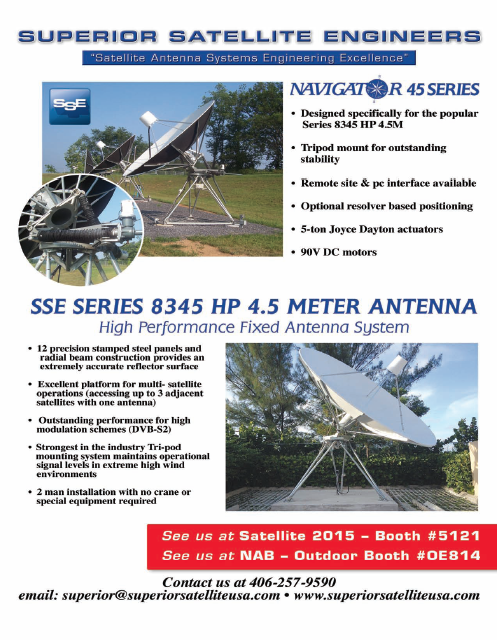
It is key to understand that our industry needs futureproof solutions to meet the customer expectations: address the increasing OPEX and CAPEX challenges while remaining agile to enable new satellite services in an ever-changing world.
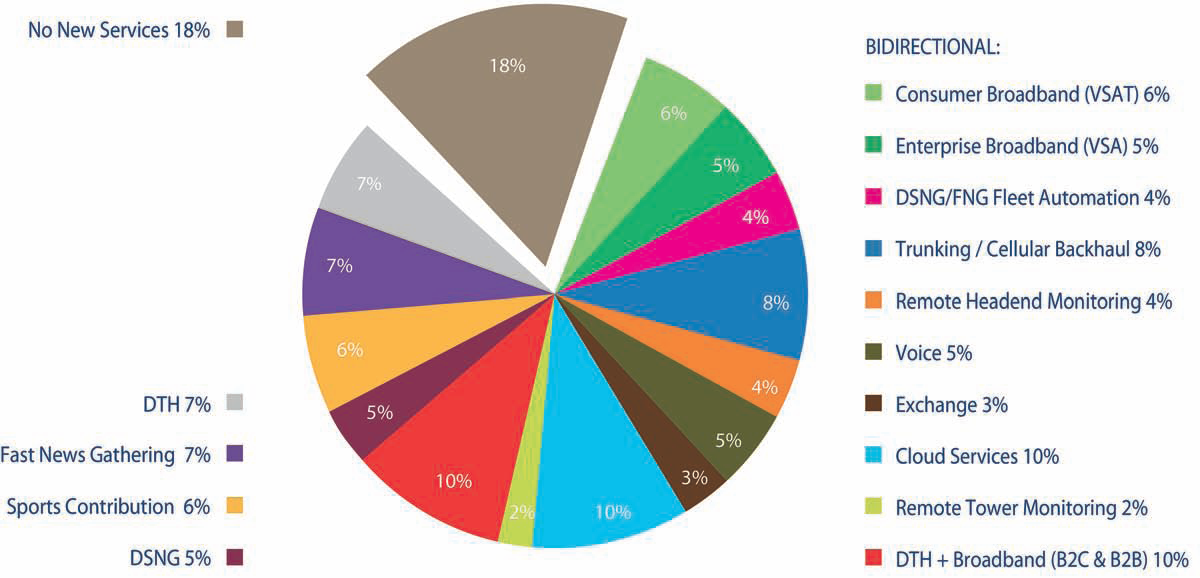
Figure 1. Newtec survey results ©: 82 percent of the participants will add new services to their network in the near future. The majority of the to-be-added services require bidirectional satellite connectivity (e.g., VSAT).
The era of multiservice is here—with satellite service providers, teleport operators and broadcasters facing numerous challenges, including more complex workflows, the introduction of new services, increased user expectations for always-on connectivity and pressure on efficiency in both the space and ground segments.
The importance of embracing the multiservice trend was emphasized by our recent comprehensive industry survey, which aimed to address and understand the key challenges of our satellite industry. About 270 leaders participated in the survey which took place in the second half of 2014.
The findings revealed our industry is vibrant and in a constant search for new growth and expansion, with 82 percent planning to launch additional services in the near future (please see Figure 1 below).
In the past, the high CAPEX and OPEX required to roll out new services In the past, the high CAPEX and OPEX required to roll out new services on dedicated satellite capacity and network infrastructure were often inhibitors to the business cases for new service launches. This is where today’s multiservice networks make the difference.
A multiservice network is a flexible, all IP-based platform that is shared to offer multiple services. Sharing satellite capacity, operational staff and ground infrastructure to deliver multiple services (like video, radio, broadband, voice, file transfers) lowers the barrier to launch new services to the market significantly, while increasing business flexibility and agility in an ever changing world.
The Three Key Capabilities Of A Multiservice Network
There are three key capabilities we see for a multiservice network that need to co-exist in one, and the same, system:
1. A multiservice network brings service and business flexibility. Flexibility is at the core of a multiservice network, and provides piece-of-mind to service providers and customers using the network. In fact, product and service offerings can be adjusted at any time to maximize the business opportunities. Our multiservice platform, called Newtec Dialog®, (see Figure 2 on the next page) is a safe investment, future-proof to carry any existing or new media, voice or broadband service.
2. Scalability of the system (and investment) is imminent to successful incubation and launch of new service offerings. A portfolio of satellite terminals in terms of cost and performance for any frequency band, and a scalable hub, are prerequisites to scalability. The emerging market from High Throughput Satellite (HTS) networks benefits even more from scalable ground infrastructure than conventional networks do.
3. Efficiency, which means two things. On the one hand, it implies effective use of assets and resources, workflows and time-scheduled transmissions that share satellite space segment and satellite modems in a reliable manner, avoiding any conflicts during transmission sessions. This implies a solid session and resource manager as well as trustful Quality of Service (QoS) and Service Level Agreement (SLA) management at the heart of the system. On the other hand, efficiency also alludes to efficient transmission.
Multiservice + High Throughput Satellites
In the last five years we have seen a steady growth in HTS capacity. While initially HTS was introduced for specific markets, mostly for broadband applications, most satellite operators are now entering the arena as well, resulting in HTS capacity becoming available in all regions.
We expect that the increased HTS capacity will boost applications and opportunities, which have been challenging to deliver over traditional satellite. As a result, service providers will be able to buy capacity on HTS beams that are of interest to their business offerings.
As the business environment becomes more complex, the pitfall for many service providers is to build their services on equally complex infrastructures that have organically grown over time along with their business. These platforms become difficult to manage and operate and have a heavy impact on operational and capital expenses.
Small changes to improve operational efficiency, or to satisfy the customer, prove difficult when having different technologies, topologies and platforms on top of each other. Consequently, a flexible HTS platform will be needed to achieve this simplification of operations.
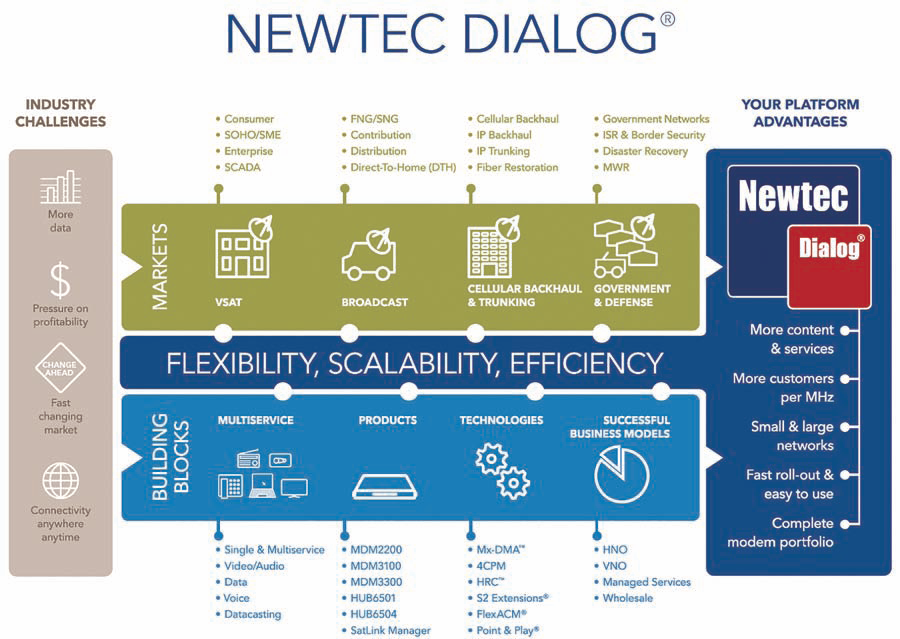
New and optimized business models will also be needed as the traditional value chain for satellite operators, teleport operators and service providers continues to transform. A multiservice platform which allows operators to invest as the business grows, and scale up the hub flexibly will be absolutely vital to enable low up-front CAPEX requirements.
Bridging The Digital Divide: Mobile Backhaul
Another key area that satellite operators should be including in their business plans is satellite backhaul. Mobile operators in emerging markets are under pressure to extend their services in rural areas: Because either their markets are becoming mature, or governments are now willing to bridge the digital divide and ready to enforce Universal Service Obligation (USO) programs. Satellite backhaul is often the only mobile transport available in these remote regions, providing reliability and quick service roll-out, but also bringing increased latency and operational costs which must be mitigated with the right solutions.
Technology and usage have a direct impact on the evolution of the mobile backhaul solution and if significant optimization has been achieved on the forward satellite channel, the return channel has been somehow overlooked. This has led to the industry being entangled in the choice between SCPC and TDMA technology.
While SCPC provides efficient and dedicated capacity with lower jitter (ideal for 2G voice) it can be expensive for low traffic requirements. TDMA allows sharing the bandwidth between the base stations and maximizing usage, but it cannot guarantee that voice calls will not be dropped during peak traffic conditions.
Mobile operators want to protect their voice traffic under any circumstances and they do not want to be in a situation where there has not been sufficient provision to guarantee it. They also want to reduce their OPEX and ensure that a sound utilization of capacity is performed since newer types of data traffic are bandwidth hungry. Both SCPC with its service guarantee and efficiency, and TDMA with its flexibility could help, but they would have to operate almost simultaneously!
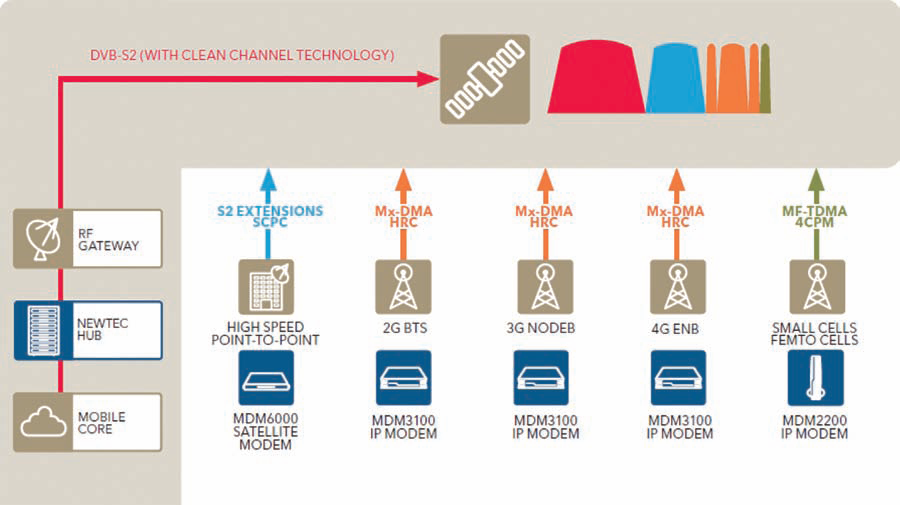
Deciding Between SCPC and MF-TDMA: Have You Heard About Mx-DMA™?
In traditional systems, customers have to choose between SCPC and MF-TDMA during the network build, making this a one-time choice. Newtec has three different technologies available that can be dynamically selected to offer optimal performance for a given service and user profile. In addition to SCPC links and MF-TDMA, a third and innovative technology is part of Newtec Dialog. At the heart of this platform lies the patented return link technology called Cross-Dimensional Multiple Access or, in short, Mx-DMA™.
The innovation of Mx-DMA combines the best of SCPC and MF-TDMA, resulting in a network that offers both the flexibility of MF-TDMA and the efficiency of SCPC. The Mx-DMA access technology also includes a new low latency and highly efficient waveform called HighResCoding™ (HRC).
This HRC refers to the fact that there is a very high granularity in MODCODs so that the highest transmission efficiency and link availability is achieved at any moment in time. As a result, Newtec Dialog customers no longer have to make the difficult choice between SCPC high-efficiency or MF-TDMA bandwidth allocation flexibility at the time they design their system. In fact, the platform can always select the best-fit return technology—today or any time in the future.
When providing cellular backhaul, for example, Newtec Dialog leverages the technologies according to traffic conditions. It provides the disruptive Mx-DMA technology, combining the benefits of SCPC and TDMA which ensures that all the traffic is accommodated at each remote base station while multiplexing the bandwidth very efficiently between these remotes to decrease the backhaul operating costs.
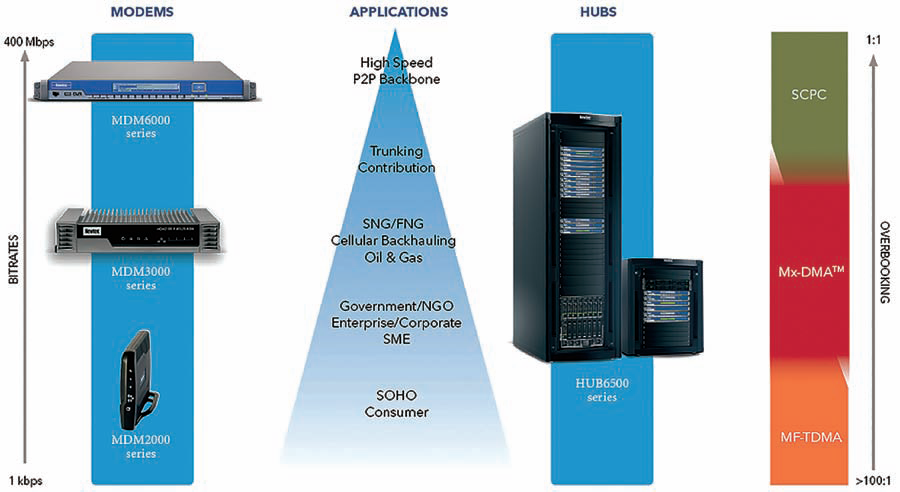
With the advent of this game changer, the technology for satellite backhaul has to be repositioned for maximized efficiency. SCPC is then focused on very high services (trunking) or point-to-point, with MF-TDMA providing the lower end and Mx-DMA covering the largest range of dynamic services (see Figure 4 above). Additionally, Mx-DMA implements a smart management of link margins which is particularly useful with HTS that typically leverage Ku- or Ka-bands which are more sensitive to rain fade. Furthermore, Mx-DMA guarantees maximum throughput while constantly adapting to the rain effect.
And, Speaking of Newtec Dialog...
If service provider, broadcasters and teleport operators are finding it difficult to predict where and which satellite services will remain relevant over time, particularly versus terrestrial services, they are not alone. With a rapid roll-out of fiber in many regions and terrestrial services getting cheaper, there is most certainly a threat to the traditional satellite business model.
Newtec Dialog is the answer as this technology provides a flexible, scalable and efficient solution to face some of the challenges associated with today’s markets as well as to turn those challenges into opportunities.
Dialog is a multiservice satellite platform; multiservice points to the fact that a single satellite network and space segment can be operated to support a variety of telecommunication services. All of this is applied with the highest bandwidth efficiency (OPEX) and scalability (CAPEX) to the service provider.
Welcome in the new multiservice. Let’s talk about your projects: www.newtec.eu + sales@newtec.eu.



